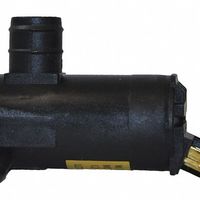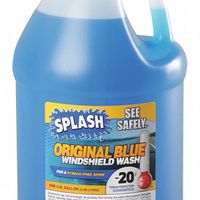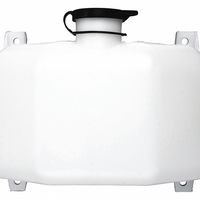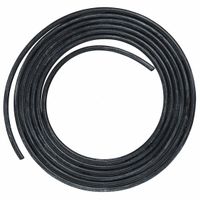Call +(254) 703 030 000 / 751 483 999 / 721 704 777
- Home
- Fleet Vehicle Maintenance
- Vehicle Windshield Maintenance
- Vehicle Windshield Washer Fluids Parts
Vehicle Windshield Washer Fluids & Parts
Vehicle washer fluid and parts help keep windshield components operating smoothly to maintain clear visibility through front and back windows. Washer fluid and windshield treatments remove dirt, prevent fog and condensation, and repel water from windshields. Windshield washer pumps transfer washer f .....Read More
Frequently Asked Questions
What type of washer fluid should I use for my vehicle?
To determine the appropriate washer fluid for your vehicle, consider the following factors:
1. **Climate**:
- **Cold Weather**: Use a winter-specific washer fluid with antifreeze properties to prevent freezing. These fluids often contain methanol or ethanol.
- **Warm Weather**: A standard summer washer fluid is sufficient, focusing on removing bugs and road grime.
2. **Vehicle Specifications**:
- Check your vehicle’s owner manual for any specific recommendations or requirements regarding washer fluid.
3. **Environmental Concerns**:
- Opt for biodegradable or environmentally friendly washer fluids if you are concerned about environmental impact.
4. **Performance Needs**:
- For enhanced cleaning, consider fluids with added detergents or those designed to remove specific contaminants like bugs, tar, or tree sap.
5. **All-Season Fluids**:
- If you prefer a single solution year-round, choose an all-season washer fluid that offers both antifreeze protection and effective cleaning.
6. **DIY Solutions**:
- Homemade solutions can be used in a pinch, but ensure they do not contain ingredients that could damage your vehicle’s paint or washer system.
7. **Brand and Quality**:
- Choose reputable brands known for quality and effectiveness to ensure optimal performance and protection.
By considering these factors, you can select a washer fluid that meets your vehicle’s needs and your personal preferences.
How do I refill the windshield washer fluid reservoir?
1. **Locate the Reservoir**: Open the hood of your vehicle. Look for the windshield washer fluid reservoir, which is usually a translucent container with a cap featuring a windshield/water symbol.
2. **Check Fluid Level**: If the reservoir is translucent, you can see the fluid level. If it's low or empty, it needs refilling.
3. **Select the Right Fluid**: Purchase windshield washer fluid from an auto parts store or gas station. In colder climates, choose a fluid with antifreeze properties to prevent freezing.
4. **Open the Cap**: Unscrew or pop open the cap of the reservoir. Some caps may be tethered to the reservoir to prevent loss.
5. **Pour the Fluid**: Using a funnel can help prevent spills. Pour the windshield washer fluid into the reservoir until it reaches the fill line or is about an inch from the top.
6. **Secure the Cap**: Once filled, securely replace the cap on the reservoir to prevent contamination or spillage.
7. **Check for Leaks**: After refilling, check under the vehicle for any leaks. If you notice fluid leaking, there may be a crack or loose connection that needs attention.
8. **Test the System**: Turn on your vehicle and activate the windshield washer system to ensure it sprays correctly. This confirms the fluid is flowing properly through the system.
9. **Dispose of Empty Containers**: Properly dispose of or recycle the empty washer fluid container according to local regulations.
10. **Close the Hood**: Ensure the hood is securely closed before driving.
Regularly check and refill the reservoir to maintain clear visibility while driving.
Why is my windshield washer fluid not spraying?
Your windshield washer fluid may not be spraying due to several potential issues:
1. **Empty Reservoir**: The most common reason is an empty washer fluid reservoir. Check and refill it if necessary.
2. **Clogged Nozzles**: Dirt, debris, or wax can clog the nozzles. Clean them with a pin or needle to clear any blockages.
3. **Frozen Fluid**: In cold weather, the fluid can freeze if it’s not rated for low temperatures. Use a winter-grade fluid to prevent freezing.
4. **Faulty Pump**: The washer pump may be malfunctioning. Listen for a humming sound when activating the washer. If silent, the pump might be faulty and need replacement.
5. **Blown Fuse**: A blown fuse can disrupt the electrical circuit. Check the vehicle’s fuse box and replace any blown fuses related to the washer system.
6. **Disconnected or Damaged Hoses**: Inspect the hoses for disconnections or damage. Reconnect or replace them if necessary.
7. **Electrical Issues**: Wiring problems or a faulty switch can prevent the system from working. Inspect the wiring and switch for any visible issues.
8. **Air in the System**: Air trapped in the lines can prevent fluid from reaching the nozzles. Run the washer system for a few seconds to purge any air.
9. **Blocked Filter**: Some systems have a filter that can become clogged. Clean or replace the filter if applicable.
10. **Mechanical Obstructions**: Ensure there are no obstructions in the wiper arms or linkage that might affect the washer system.
By systematically checking these components, you can identify and resolve the issue with your windshield washer fluid not spraying.
How do I fix a clogged windshield washer nozzle?
To fix a clogged windshield washer nozzle, follow these steps:
1. **Identify the Problem**: Ensure the issue is with the nozzle and not the washer pump or fluid reservoir. Check if the washer fluid is full and the pump is operational.
2. **Inspect the Nozzle**: Examine the nozzle for visible debris or blockages. The nozzles are usually located on the hood or at the base of the windshield.
3. **Clean the Nozzle**: Use a pin or needle to gently clear any debris from the nozzle opening. Be careful not to damage the nozzle.
4. **Use Compressed Air**: If the blockage persists, use a can of compressed air to blow out any debris. Aim the air into the nozzle to dislodge any internal clogs.
5. **Check the Washer Hose**: Inspect the hose connected to the nozzle for kinks or blockages. Detach the hose and blow through it to ensure it is clear.
6. **Soak in Vinegar**: If mineral deposits are suspected, remove the nozzle and soak it in a bowl of vinegar for 30 minutes to dissolve the deposits.
7. **Reattach and Test**: Reattach the nozzle and hose, ensuring all connections are secure. Test the washer system to see if the fluid sprays correctly.
8. **Replace if Necessary**: If cleaning does not resolve the issue, consider replacing the nozzle. Purchase a compatible replacement and install it according to the vehicle’s manual.
9. **Prevent Future Clogs**: Use a quality washer fluid to prevent mineral buildup and regularly clean the nozzles as part of vehicle maintenance.
By following these steps, you should be able to clear a clogged windshield washer nozzle effectively.
How often should I replace my windshield washer fluid?
You should replace your windshield washer fluid whenever it runs low, which can vary based on driving conditions and frequency of use. Regularly check the fluid level, especially before long trips or during seasons with increased usage, such as winter or pollen-heavy spring months. It's advisable to top off the fluid every few months as part of routine vehicle maintenance. If you notice the fluid is dirty or has debris, it's a good idea to replace it entirely to ensure optimal performance. Additionally, if you live in an area with harsh winters, consider switching to a winter-specific washer fluid that prevents freezing.
What are the signs of a failing windshield washer pump?
Signs of a failing windshield washer pump include:
1. **No Fluid Spray**: When you activate the washer system, no fluid sprays onto the windshield, indicating the pump may not be functioning.
2. **Weak Spray**: The fluid sprays weakly or intermittently, suggesting the pump is losing pressure or is partially blocked.
3. **Unusual Noises**: Grinding or whining noises when the washer system is activated can indicate a failing pump.
4. **Leaking Fluid**: Puddles of washer fluid under the vehicle or near the reservoir can suggest a leak in the pump or its connections.
5. **Burnt Smell**: A burnt electrical smell when using the washer system may indicate the pump motor is overheating or failing.
6. **Blown Fuse**: Frequent blowing of the washer system fuse can be a sign of an electrical issue with the pump.
7. **Dashboard Warning Light**: Some vehicles have a warning light for washer fluid issues, which may illuminate if the pump is malfunctioning.
8. **Inconsistent Operation**: The pump works sporadically, indicating an intermittent electrical or mechanical fault.
9. **Visible Damage**: Physical inspection reveals cracks, corrosion, or other damage to the pump or its components.
10. **Fluid Reservoir Full**: The reservoir is full, but the system does not spray, pointing to a pump issue rather than a lack of fluid.
If you notice any of these signs, it may be necessary to inspect, repair, or replace the windshield washer pump to ensure proper functionality.
Can I use water instead of windshield washer fluid?
Using water instead of windshield washer fluid is not recommended. While water can temporarily clean your windshield, it lacks the cleaning agents and additives found in commercial washer fluids that help remove dirt, grime, and bugs effectively. Additionally, water can freeze in cold temperatures, potentially damaging the washer fluid reservoir, pump, and lines. Commercial washer fluids contain antifreeze components to prevent freezing and ensure proper function in various weather conditions. Moreover, water does not have the same lubricating properties, which can lead to streaking and reduced visibility. In summary, while water might work in a pinch, it is not a suitable long-term replacement for windshield washer fluid.



